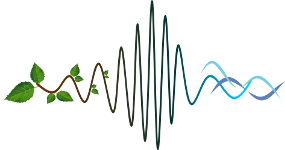Sound is an intrinsic component of ecosystems and studies have shown that sound plays a significant role in how plants and wildlife interact with their surroundings. The same is true for human-wildlife interactions. Soundscapes vary by day, by season, and across space. Winter in northern latitudes possesses unique soundscape attributes because of a substantial decrease in wildlife vocalizations (biophony), an increase in wind events (geophony), and encroaching noise from winter recreation like snowmobiling (anthrophony). We introduce a fourth soundscape component, silence, as an additional attribute of winter soundscapes. Our objectives were to quantify and visualize the temporal and spatial variation of these four soundscape components in a winter landscape. We sampled 62 locations across the 805,000 ha of Kenai National Wildlife Refuge, Alaska, USA between December 2011 and April 2012. We recorded ambient sounds and quantified the power spectral density in spectrograms at 1 kHz frequency intervals using the Remote Environmental Assessment Laboratory (www.real.msu.edu). We identified sounds from 67,461 recordings and visualized the temporal variation of all soundscape components. We generated predictive spatial models of each soundscape component using machine learning (TreeNet). Silence was the most prevalent record, occurring predominantly at night. Anthrophony, biophony, and geophony were all more prevalent during the day. Anthrophony and biophony had similar temporal patterns over monthly time frames. Geophony was highest in February and January was the quietest month of the season. Spatially, distance to urban interface and rivers were the most common predictors of biophony and anthrophony. Geophony's top predictors were distance to forest and urban interface, and elevation. Distance to rivers, shrubland, and barren land were the top three most important predictors of silence. Our results reveal how winter's biophony, anthrophony, geophony, and silence are arranged over space and time. We also provide evidence of anthrophony's further encroachment into remote wilderness.
|
|
|
|
Tuesday
17
Dynamics II
› 12:15 - 12:30 (15min) › Rouelle Conference Hall
Temporal and Spatial Variation of a Winter Soundscape
1 : EWHALE Lab, Biology and Wildlife Department, University of Alaska Fairbanks
Fairbanks, Alaska -
United States
2 : Remote Environmental Assessment Laboratory, Michigan State University
Lansing, Michigan -
United States
3 : Kenai National Wildlife Refuge, U.S. Fish and Wildlife Service
* : Corresponding author
Soldotna, Alaska -
United States
|
| Online user: 2 | RSS Feed |

|

 PDF version
PDF version